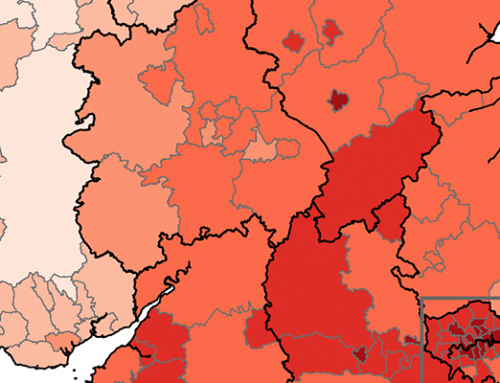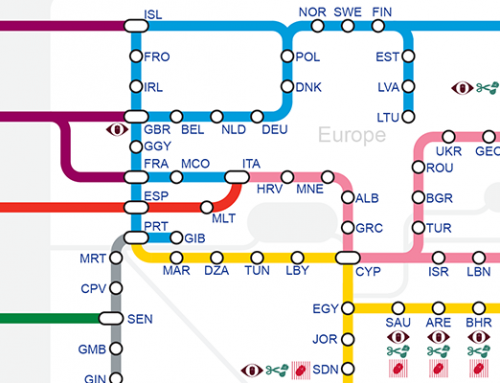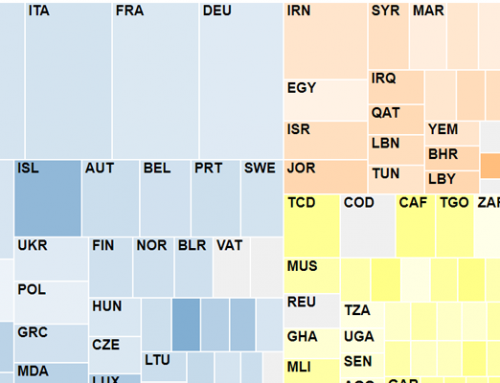(Click to see full image)
This map illustrates the total number of Internet users in a country as well as the percentage of the population that has Internet access.
Data
The map uses 2011 data on Internet users and total population datasets that were obtained from the World Bank. The World Bank has tracked the number of Internet users and Internet connections per country since the 1990s as part of its Worldwide Governance Indicators project.
The data are visualized with a hexagon-shaped cartogram in which the size of each country is drawn based on its population of Internet users. Each hexagon accounts for about one third of a million Internet users. Countries with fewer than that number have been removed from the map. The shading of each country reflects its Internet penetration rate: darker shades indicate higher levels of Internet usage in the population.
Findings
The distortion in the map paints a revealing picture about human activity on the Internet. China is now home to the world’s largest Internet population at over half a billion. The United States, India, and Japan then follow as the next most populous nations of Internet users.
Looking at the largest Internet countries, we see two important trends.
First, the rise of Asia as the main contributor to the world’s Internet population; 42% of the world’s Internet users live in Asia, and China, India, and Japan alone host more Internet users than Europe and North America combined.
Second, few of the world’s largest Internet countries fall into the top category (>80%) of Internet penetration (and indeed India falls into the lowest category, at <20% penetration). In other words, in all of the world’s largest Internet nations, there is still substantial room for growth.
We also see an interesting geographic pattern of Internet penetration. All but four of the countries with an Internet penetration rate of over 80% are in Europe (Canada, New Zealand, Qatar, and South Korea being the exceptions).
The map also reveals interesting patterns in some of the world’s poorest countries. Most Latin American countries now can count over 40% of their citizens as Internet users. Because of this, Latin America as a whole now hosts almost as many Internet users as the United States.
Some African countries have seen staggering growth, whereas other have seen little change since we last mapped Internet use globally in 2008. In the last three years, almost all North African countries doubled their population of Internet users (Algeria being a notable exception). Kenya, Nigeria, and South Africa, also saw massive growth. However, it remains that over half of Sub-Saharan African countries have an Internet penetration of less than 10%, and have seen very little grow in recent years.
It is therefore important to remember that despite the massive impacts that the Internet has on everyday life for many people, most people on our planet remain entirely disconnected. Only one third of the world’s population has access to the Internet.




